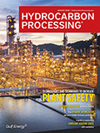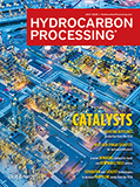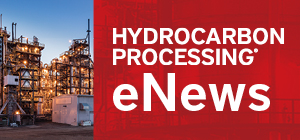Natural Gas
HP Viewpoint: Refining industry developments—Growing opportunity and uncertainty
The U.S. has seen a dramatic change in energy production in just a relatively short period. Crude oil output has increased by about 55% in the last five years, according to data from the Energy Inform..
HP Industry Metrics: Industry Metrics
A bump in the US economy triggered strong gasoline use. Debottlenecking of pipelines allow more US midcontinent crude to reach US Gulf Coast refineries, which operated at the highest utilization rates..
HP Industry Perspectives: New development for drop-in fuels
Future fuels must have a unique “drop-in” capability. They must also be compatible with present vehicle engines and fungible within the distribution system. Finding alternatives to corn-base..
Global refining: What is the future?
Demand for transportation fuels will continue to increase over the next 15 to 25 years. These fuels will still be primarily based on crude oil. Developing nations are driving growing demand for energy..
HP Boxscore Construction Analysis: The CIS—four countries, $50 billion in downstream investments
Azerbaijan, Kazakhstan, Turkmenistan and Uzbekistan are laying the foundation to attract foreign investment to develop their vast hydrocarbon reserves, as well as to develop their downstream processing infrastructure to meet rising demand and export opportunities.
HP News
Refining capacity in the US increases slightly At the beginning of 2014 in the US, there were 139 operating refineries and three idle refineries with total atmospheric crude oil distillation capacity ..
Case history: Modernization of Russia’s refining industry—Part 1
Russian laws governing transportation fuels and crude oil have undergone many changes. These regulatory changes will involve the revamping of Russia’s refining industry. At present, this nation h..
How sensitive is your treating plant to operating conditions?
A normal expectation in the course of operating an amine treating plant for acid gas removal is that small changes in operating conditions will result in correspondingly small responses in plant performance. However, such expectations are not always well founded. To establish credibility for the process simulator used in the design of a new LNG plant, the mass-transfer rate-based simulation results for the new plant are compared with performance data from an operating LNG plant.
Maximize LNG carrier efficiency through integrated optimization
Officers and engineers aboard an LNG carrier are busy. They require real-time, user-friendly data derived from the vessel’s systems, as well as accurate individual metrics.
HP Global: The reshaping of Latin America’s petrochemical industry
Latin American economies continue to grow. Fig. 1 shows the gross domestic product (GDP) growth rates from 2010 through 2018 for this region. Brazil accounts for 35% of the total GDP growth. For the p..

- Vioneo awards Lummus polypropylene contract for world's first industrial scale fossil-free plastics from green methanol facility 8/19
- Research: Developing an energy-saving, carbon-capturing method for making ethylene glycol 8/19
- Emerson announced the release of its new Rosemount 3144S temperature transmitter 8/19
- Chinese refiners sweep up Russian oil after Indian demand falls 8/19
- Indonesia plans quick-to-build oil refineries for U.S. crude 8/19
- Russia's ultra low-sulfur diesel exports from Primorsk scheduled to rise in August 8/19




